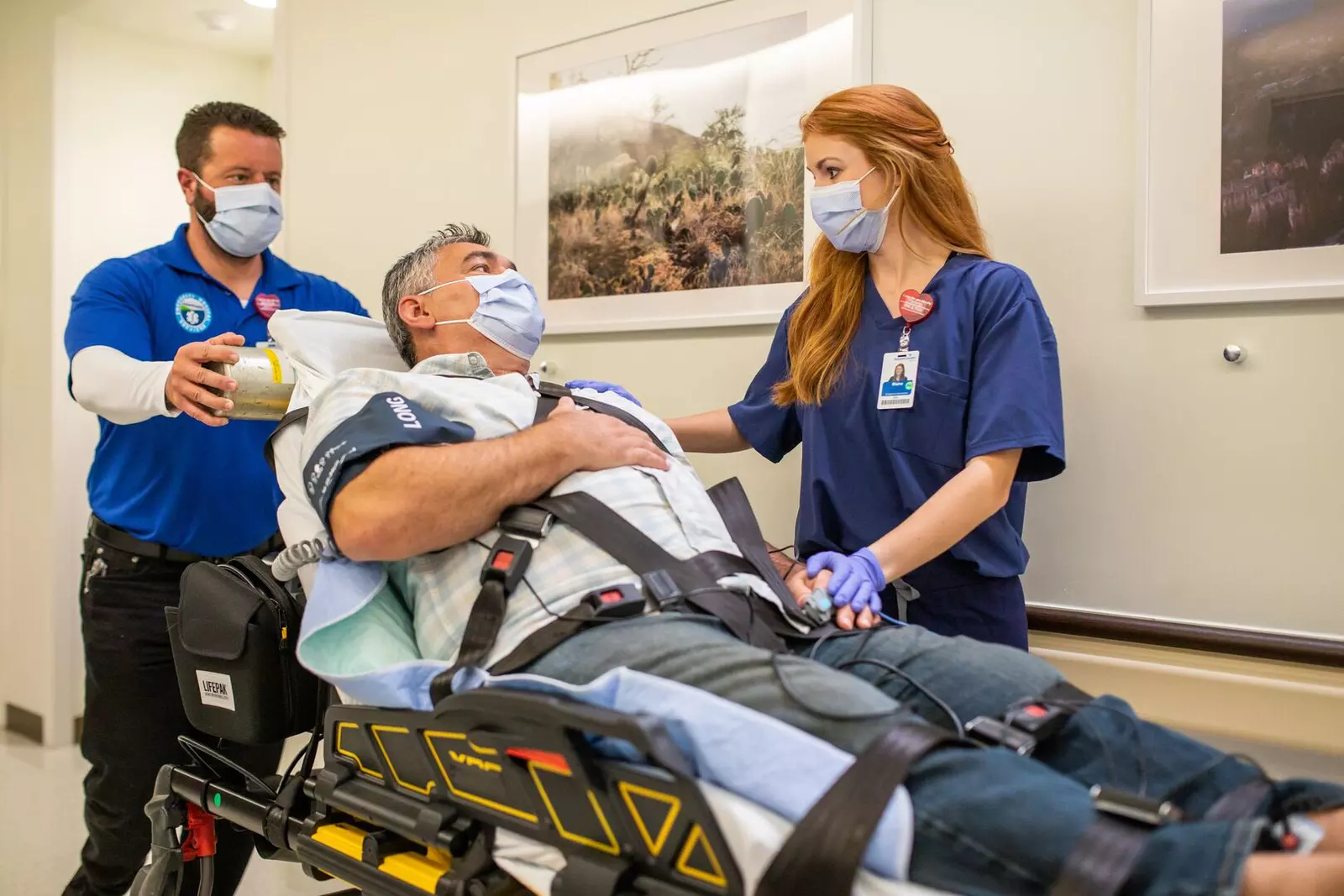- Matthew Gomez

Strokes happen suddenly and often without warning. Knowing the signs and symptoms of stroke, and what to do once you recognize them, can literally save lives.
Dr. Alkesh Brahmbhatt, NeuroScience system emergency department director at AdventHealth Orlando, shares his insights on the signs and symptoms of stroke and how important it is to get to the ER.
What are the signs and symptoms of stroke that would signal that you need to go to the ER?
Whether it’s happening to you or to someone you love, there’s a simple phrase to remember when making a potential stroke diagnosis: B.E. F.A.S.T. Knowing this phrase and the importance of each letter can be the difference between life and death.
B.E. F.A.S.T. stands for Balance, Eyes, Face, Arm, Speech and Time. Has the patient lost balance? Are their eyes clear? Quick checks of these two items could indicate a potential stroke, in which case you should call 911 or go to the emergency room (ER) immediately.
Whether it’s happening to you or to someone you love, there’s a simple phrase to remember when making a potential stroke diagnosis: B.E. F.A.S.T.
Emergency physicians are trained to recognize if a patient is having a stroke when dizziness or other abnormal symptoms are reported. One of the easiest methods for identifying a stroke is known as a F.A.S.T. exam:
- F is for face: What does your face look like? Is it asymmetrical? Is the face drooping?
- A is for arms: Can you move your arms?
- S is for speech: Are you slurring your speech or unable to talk?
- T is for time: How long have you been experiencing these issues? It’s time to call 911 or go to the ER.
Where should patients go if they believe they are having a stroke?
The ER has to be the first place patients who think they are having a stroke need to go. If you’re having a heart attack, you don’t have time to go to your primary physician. You go to the ER so we can use our lifesaving techniques. Same thing with stroke. As soon as you feel you are experiencing the signs and symptoms of stroke, go to the ER or call an ambulance to take you to the ER. The paramedics can start the protocol and alert the ER that you are coming in with slurred speech, dizziness and other subtle signs and symptoms. Once we make those determinations based on the F.A.S.T. exam, we can continue with a stroke protocol.
What can stroke patients expect to experience in the ER?
As soon as we know a stroke is a high probability, there is an immediate protocol: Code Stroke, we call it.
As soon as that happens, the patient is immediately wheeled to a team that’s ready to go with nurses on each side with IVs, doing assessments for signs of stroke. A neurologist will be there on camera observing everything to determine if there is an indication for a stroke treatment right there at the bedside. You can expect an expedited process for stroke because every second or minute of delay could advance that stroke to the point where the patient will be debilitated.
AdventHealth is comprised of free-standing ERs, hospitals and neurosurgical hubs offering specialized care. Free-standing ERs don’t have an admission level, but you can still receive treatment there for stroke. They have the medication necessary to get things started before transferring a patient to a higher level of care.
My job as Neuroscience director is to be the liaison between the ER and the neuroscience field so we can all work together and they all have a voice in the process to make it easier for patients and physicians.
The ER is the ultimate catch-all for all sorts of medical dilemmas. As we tell patients, if you have any doubts – if you’re experiencing pain, dizziness or any uneasiness with your health condition – come to the ER and we’ll make a determination about what the next levels of care may be.
Recent News
David Weis has been promoted to serve as president/CEO for the region covering east Volusia, Flagler and St. Johns counties. Lorenzo Brown has been promoted to serve as president/CEO for the region...
On the newest Inspiring Wholeness podcast, Obie Diaz, local morning radio show host, shares how a routine physical eventually led to two open heart surgeries.
AdventHealth President and CEO Terry Shaw has been named one of Modern Healthcare’s 100 Most Influential People in Healthcare for 2024, marking continued recognition of Shaw as a transformative leader...
AdventHealth President/CEO Terry Shaw's retirement is planned for July 2025.
On the newest Inspiring Wholeness podcast, Obie Diaz, local morning radio show host, shares how a routine physical eventually led to two open heart surgeries.
AdventHealth has named Elise MacCarroll-Wright as president and CEO of UChicago Medicine AdventHealth Hinsdale in its Great Lakes Region, effective Jan. 6, 2025.
AdventHealth has named Dave Tkachuck president/CEO for UChicago Medicine AdventHealth La Grange, effective Jan. 6.
A UChicago Medicine AdventHealth neurologist addresses the growing gap between the number of men and women diagnosed with MS.
AdventHealth has named Ryan Quattlebaum president/CEO for AdventHealth Wesley Chapel, effective Dec. 29.
Health care and government leaders celebrate the much-anticipated expansion of AdventHealth University.









